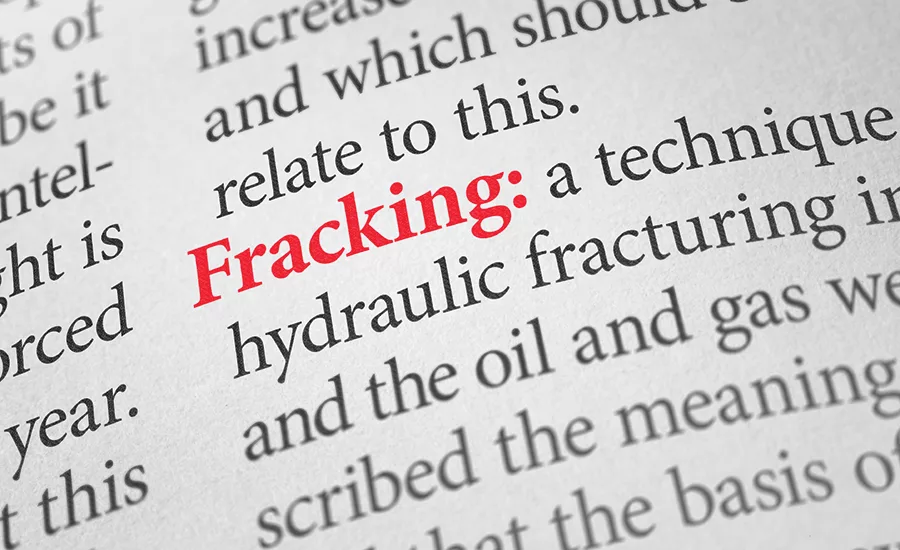Drilling Professionals Can Counter 'Keep It in the Ground'

The U.S. fossil fuel industry is under attack.
However, we’re all too distracted by plummeting energy prices and the glut of oil in the global market to turn around and see who’s throwing the daggers.
While oil prices may make headlines, they’re not the greatest, long-term threat to the future of fossil fuel production in America. Oil prices have always been, and will always be, cyclical.
It’s the anti-energy organizations who are trying to convince the public that they’re saving the planet, securing a better economy and achieving energy independence, that are the greatest threat to our future.
Their phony, moral claims couldn’t be further from the truth.
In reality, these groups have no realistic plan on how to achieve our current and future energy needs, and they purposely mislead us about the overall environmental gains over the past 50 years. Who knows if they even care? They’re only in it for the reason they say we’re in it: for political leverage, and because it’s business — big business.
According to a U.S. Senate Minority Report, these anti-energy groups are also funded by the deep pockets of wealthy foundations. All told they are spending over $500 million a year on an effort to annihilate the oil and gas industry. They are spending it on a coordinated, well-designed campaign, utilizing all forms of media and tactics to distort the facts, destroy the image of industry and eliminate our license to operate in the U.S. and around the world.
Their successes aren’t hard to quantify. Intensifying regulations and low oil prices have weakened the energy sector’s ability to advocate for itself, allowing activist groups to engineer a multi-dimensional anti-energy campaign that spans the entire country and opposes all forms of fossil fuel development.
The campaign, called “Keep It in the Ground,” aims to block all energy development on public and private lands and waters, regardless of any safety or regulatory stringency. Any project related to fossil energy — pipelines, processing plants, oil and gas exploration, and electricity generation — is automatically opposed, regardless of the real needs or circumstances.
They create the appearance of a groundswell of opposition by cramming a few dozen activists together for a photo-op, making it look like there are hundreds in opposition. These groups are attempting to capture the cultural and moral upper hand: that this is all for the good of the environment, even if water quality has improved and carbon dioxide emissions have dropped to a 20-year low thanks to technological advancements and the increased use of natural gas. It is not debatable that energy development and environmental protection can co-exist.
Take into account that for the first time in memory, all remaining presidential candidates from a major political party have publicly opposed oil and gas development. Fossil fuel divestments are a growing trend. Activist organizations have even drafted religious organizations to preach sermons on this misguided philosophy from the pulpit.
However, despite the growing wave of protests at government meetings, local town halls and the thousands of petitions delivered to the federal administration, industry has seemingly dismissed this tidal wave of opposition, and its continuously improving win-loss record.
Consider this: By understanding the political cycle and applying pressure during campaign seasons, the opposition has declared victory on a number of major energy fronts. Most of the U.S. offshore region is off limits to exploration, minus the Gulf of Mexico, which is currently under attack. There are statewide fracking bans in New York and Maryland, with countless local bans in several other states under consideration. Energy development is off-limits in resource-rich regions like the Arctic National Wildlife Refuge and the National Petroleum Reserve Planning Area, and many of the big-name infrastructure proposals — like the Keystone XL and Bluegrass pipelines — have been tabled.
At this rate, when oil prices do recover, there might not much of anywhere or anything left to development.
What to do? How can we convince Americans — particularly those on the political left — that they should return to their long-held historic support of energy?
Our industry must start engaging groups and allies outside of its inner circle to build a successful counter campaign that shares similar traits with the very anti-energy groups that we are up against — quick, smart and agile. Most of all, we need to be proactive, not reactive.
Early communications and telling positive stories of energy development — decreasing carbon emissions, a swelling economy, the mass production of jobs, the fast improvement of technology, and the lessening numbers of imports from rival nations — will all be key. Utilizing third-party messengers is also a must-do. We can highlight schools, businesses and governments floundering under a lack of local energy development. We can show what could be if we turned it around, and the value of collaborating with communities. Talk about how we’ve improved the environment and how, with the public’s help, we can do more. Embrace the future of renewables, but also embrace the long, transitioning road to get there. Change the narrative, then drive it.
Let’s not apologize for who we are and for our industry’s contributions to help improve America. We’re not just an industry; we are Americans who help businesses grow and our economy prosper while helping better peoples’ lives.
And that means that an attack on one of us is an attack on all of us — an attack on America.
Looking for a reprint of this article?
From high-res PDFs to custom plaques, order your copy today!




